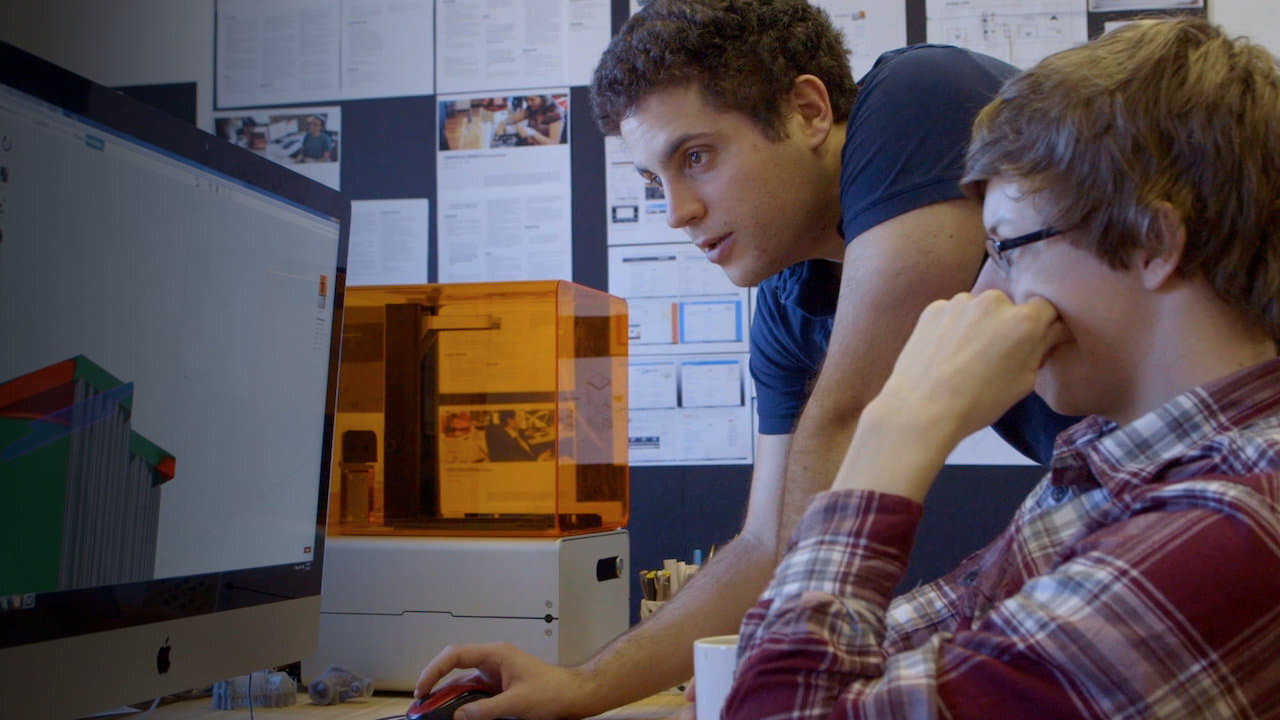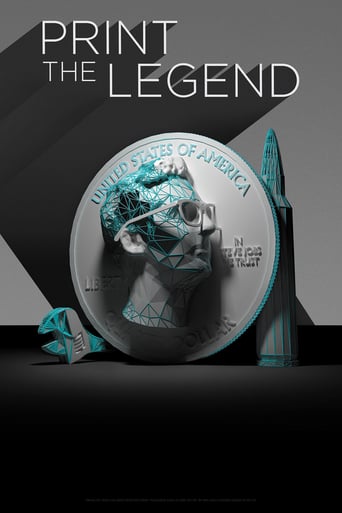linkogecko
"Print the Legend" may, on the surface, seem like a dry documentary about technology and innovators using buzzwords to talk about utopic futures. Instead, it is a truly fascinating film that takes a step back from the programming of 1s and 0s to focus instead on the results of that "programming" of neurochemicals, nature and nurture that give shape to our human behavior. The documentary starts around the time MakerBot (presented in the film as the first 3D-printer company to focus on consumer rather than industrial products, to become well-known) is starting to fill its niche and make a name for itself. Shortly after we are introduced to Formlabs, another 3D-printer company presented in the documentary not too long after its founding. Personalities from both companies as well as elsewhere in the technology and 3D-printing spheres talk about an upcoming "technological revolution", based on 3D-printers potentially becoming a household item, as a future reality that will come smoothly. About 30 minutes into the film, jealousy, interpersonal tensions, ambition, resentment, greed, fame, all start to take hold of some of these initially-idealistic entrepreneurs and make it clear that the coming of this revolution will be anything but smooth.The documentary does not veer into melodramatic territory however, as the emotional moments are balanced with actual discussions about the technology and its potential impact. In fact, one of its most interesting thread-lines is based on Cody Wilson, an anarcho-activist with an ideal for a world in which 3D-printed deadly weapons are accessible to anyone, and the reactions of the industry and authorities to such a radical concept. The film likewise benefits from very fortunate timing as showing Formlabs's relative "infancy", MakerBot's "teen and early adult" years and the "middle-age" of older, established industrial-3D-printing companies like 3DSystems and Stratasys (now wanting to enter the consumer-level market too) allows us to compare how the companies and personalities that form them change with their personal aging as well as the fast aging of the market and technology. One particularly notable case is MakerBot's definition period resulting in a shift from its early ideal of open-source engineering (in which anyone can collaborate in hopes of making a better product rather than in hopes of monetary gain) to the closed-source version of it (in which work is traded for a salary and the ultimate goal is for the company to make profits, better products along with copyright and intellectual property-based incomes, being only means to that end). This contrasted to 3DSystems's supposed shift away from taking legal action for the use of their IPs in search of a freer environment for development of the industry and products (a shift that by the end of the documentary seems to have had more ideological than practical results).Altogether, I found "Print the Legend" to be more surprising and interesting than expected, although dragged down a bit by its edition, mostly in the form of a somewhat overlong runtime. The film brings to mind other historical cases of emotional, human actions perhaps getting in the way of technological progress (and perhaps fueling them a bit too), like the now famous rivalries of Tesla/Edison, or Jobs/Gates, in the progress showing how the human condition is so incongruous. It is completely human to be emotional and illogical, to put personal ambitions before "greater good"s; it's also completely human to believe in the greater good, to have ideals and to want to make a better world; but perhaps there is nothing more completely human than drawing a blank when trying to come up with ways to reconcile these two sides, specially without losing even a bit of what makes us human in the way.
JustCuriosity
Print the Legend was well-received in its world premiere at Austin's SXSW Film Festival. While I was expecting a film focused on a new technology, the high tech elements and the implications of the technology were really secondary to exploring the world of high tech start-ups in this new and potentially revolutionary technology. The film did that very well. It focused on interviews with the employees at two startup companies, MakerBot and Form Labs. The film did an excellent job of describing the process of taking a company from being a shoestring startup to being a real company and the many bumps that the founders and employees hit along the way. The interviews are well- filmed and really showed the fascinating interactions between personalities and businesses including many of the founders were pushed out by intra-personal conflicts. Although not mentioned directly in the film directly, an important issue raised in the Q&A was the degree to which the startups were overwhelming populated by white males. The subjects from the film that attended the screening indicated that they were concerned about the issue and were attempting to address it. The inclusion of the creepy Austin-based anarchist Cody Wilson who caused an international controversy in 2012 by printing 3D guns added an interesting subplot – and some local color for the Austin audience. Wilson's bizarre efforts to print weapons raised serious questions about the ethical limits of the technology and forced the companies to seriously consider – perhaps for the first time – the moral implications of the technology were creating. This was an important element of the film, because it did move it beyond the metrics of success and profit into the realm of considering the societal impact of their work. Oddly, while Wilson was present at the post-screening Q&A, no one in the audience chose to ask him any questions. Perhaps, they just thought he wasn't worth engaging.

